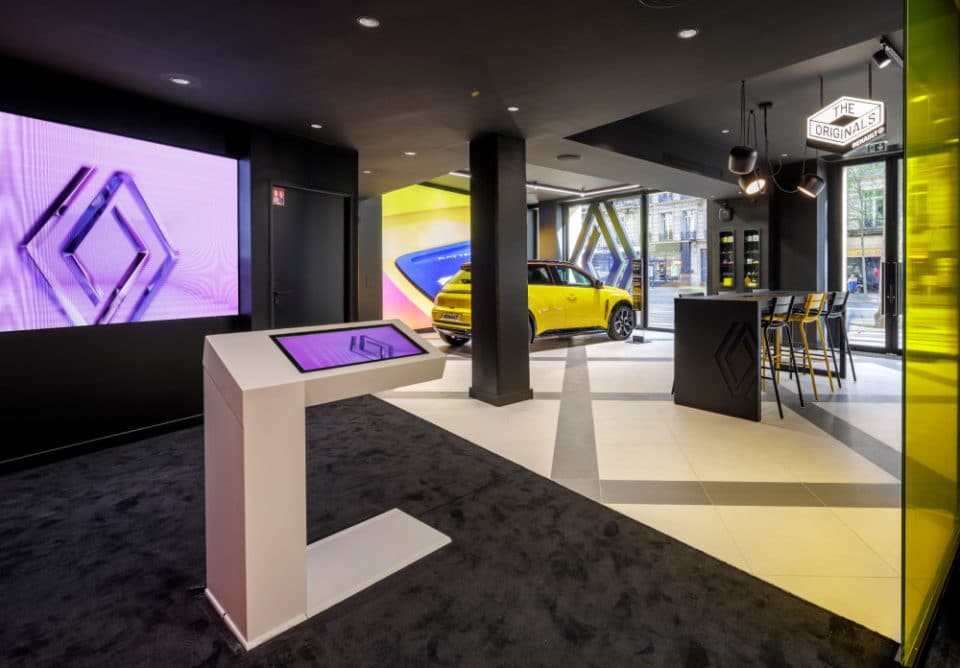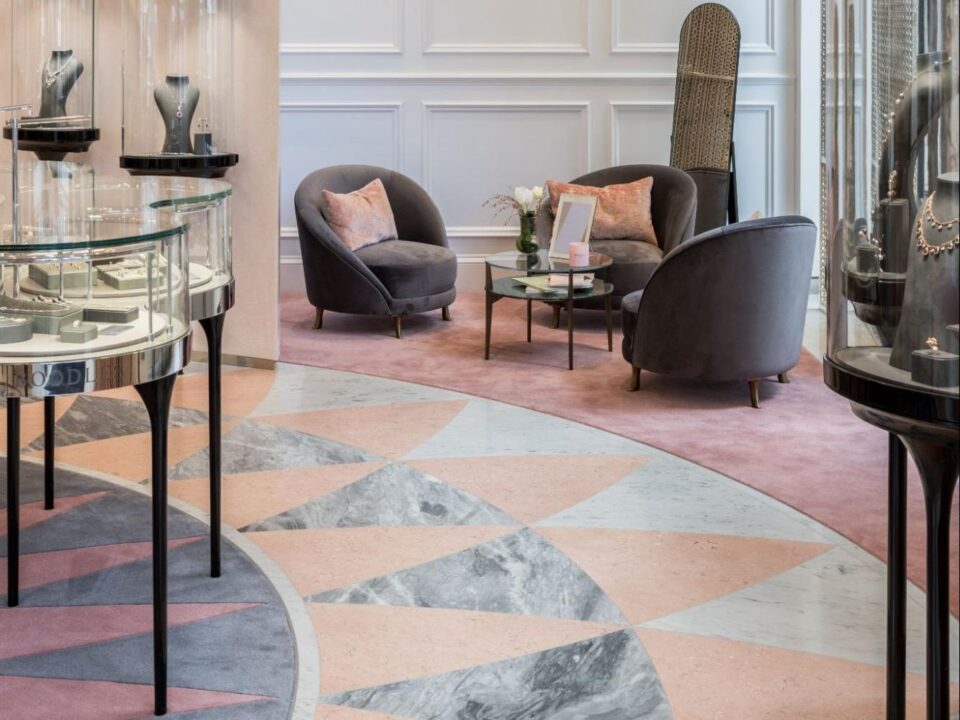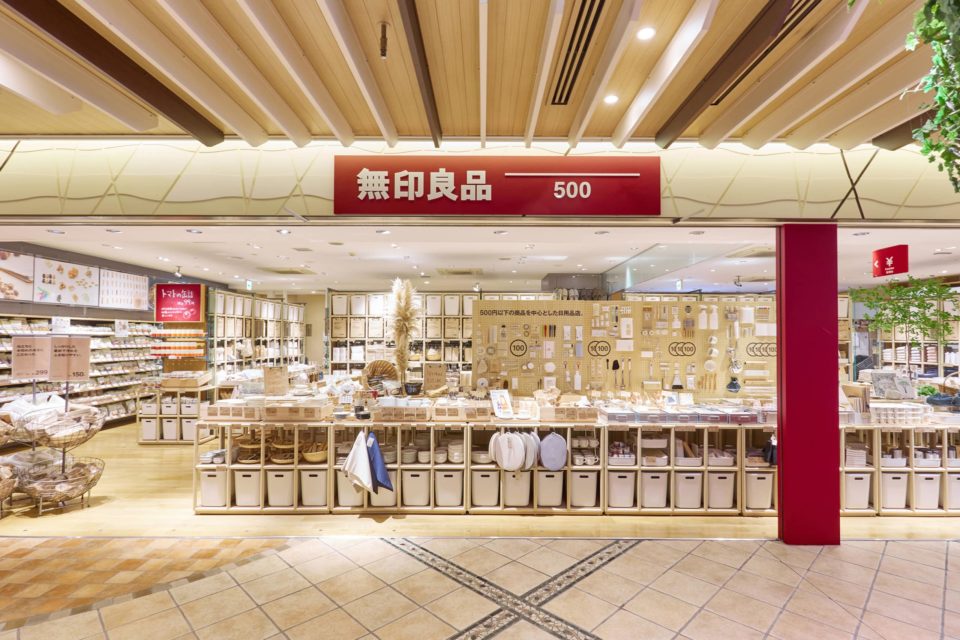The future of retail: Mary Wallace of IBM iX on the importance of keeping it simple

In the latest in our series talking to industry experts about the future of retail, Cate Trotter, Head of Trends at Insider Trends, spoke to Mary Wallace, Experience Strategist at IBM iX. They discuss everything from personalisation and customer loyalty to the importance of keeping things simple.
Tell us about your role at IBM and how that relates to retail.
I wanted to be part of a company that was genuinely changing what’s possible in retail. The part of IBM that I’ve joined, iX, brings together the creativity of an agency, but with the technology backbone of steel and the real-world business acumen which IBM has. They also have a great view over lots of industry sectors, not just retail, is vital when retail behaviour both touches every other sector and is informed by what’s happening across other industries. It’s brilliant to be at the epicentre of this new dynamic.
What’s interesting about retail at the moment?
Customer behaviour is driving what experience needs to be delivered – and retailers are playing catch up. Retailers need to build the experience around customers first – and almost put the product second. People are buying the experience more than they are the product itself, especially when I can buy the same product in multiple places. The notion of ‘value’ is constantly being redefined.
If we look back at Christmas we can see that multiple opportunities were missed by retailers, who were taken by surprise by what customers actually bought – and did not buy. There was too much focus on forecasting and not enough on responding appropriately and quickly to real-time behaviour. Lots of the headlines just before Christmas were using phrases like ‘nail-biting’; ‘last-minute rush’ and ‘desperate’. This is not the language of confidence! We thought that retailers were on top of the vagaries of the British climate – but the warm weather before Christmas and the consequent winter clothing stock surplus suggests that we’re still not getting the basics right, never mind ‘the future of retail’.
Personalisation and the importance of context
Let’s talk about personalisation. What does that mean for you?
The retail conversation about personalisation has been going on for years now – but I would question the return gained on the effort invested so far. For all the data gathered under the banner of ‘personalisation’ neither the customer nor the retailer has actually gained a great deal. The term ‘personalisation’ is in danger of becoming devalued, so it might be more meaningful – for both the customer and the retailer – to talk about ‘context’ instead.
We’re beyond the point where we can second-guess consumers now – we must learn from what they do and serve them with something that is contextually relevant. Experience in this sense is based on the last touchpoint your customer has with your brand and forms the basis of expectation of the quality of service delivered via the next touchpoint – whether this is a marketing message, a transaction or customer service. If your service is not relevant and timely, consumers with a wealth of information at their fingertips will not hesitate to look elsewhere. With this increasing consumer autonomy, we need to understand what and where is the opportunity for retail? Retailers and brands should be constantly asking themselves, “How can I make best use of my customer’s time? “; not, “How can I sell them more stuff?”
What needs to happen to make personalisation more relevant?
Retailers need the supporting infrastructure to help the customer in the moment. This means not about talking about technology, but thinking about what’s helpful to real people in the real world; and by this mean at scale, everywhere, and not just confined to a handful of hipsters in a capital city or journalists at a tech launch. We also need to redefine the term ‘retail’. This does not just mean companies who provide an inventory of stock for sale. A retailer is any business that encourages the consumer to conduct a transaction – whether physically, online, on a mobile. This could be from any sector. What’s changing – when we think about personalising retail – is that it’s less about a ‘one size fits all’ purchase event, and more about facilitating in-the-moment behaviour and understanding conversation and customer intent. It is not one single transaction but a chain of connected transactional moments.
The customer journey is increasingly convoluted; therefore, retailers need a 4D view of their customer in real time, and in their own context, rather than yours. This cross-layer understanding of the customer – not just at the point of interaction with a retailer in one moment in time – gives the retailer an ecosystem view and a much richer perspective on individual consumers. It’s not just them, but who are they with, what are they doing, where are they going – we can gain a greater understanding of their lifestyle. This is an important shift from straightforward personalisation and those annoying ‘recommended to you purchase suggestions to becoming integrated into the consumer lifestyle and delivering marketing as a service that is actually useful.
“The next level of personalisation is about all the different colours of that value means.”
If we’re talking specifically about digital and personalisation, it lays the foundation and provides the means for interaction – digital is implicit. The focus must be on the value that the interaction is delivering to both the customer and the business. Talking about the latest digital development doesn’t tell me this. I want to know: What is the value that you can bring to your customer in terms of convenience, experience, product, content and so on? And what is the subsequent benefit and impact of this on your business?
That next level of personalisation is about all the different colours of what value can be. Value today has different meanings – the age of austerity has changed our view, where ‘value’ doesn’t necessarily mean ‘cheap’. ‘Value’ could be delivering convenience, avoiding hassle, saving time, giving the customer more headspace.
And to look at another term that’s being used a lot alongside ‘personalisation’ now (in the marketing world – normal people have got better things to do)…There’s a lot of talk at the minute about ‘moments’ and ‘micro-moments’. The intention – to be able to offer something useful right when the consumer needs you – is good. But how do retailers and brands make sure that they don’t annoy consumers by appearing when it’s inappropriate? They must be transparent with the customer and show the benefit of that interaction. Demonstrate the value exchange. We all know companies are using data to better understand customers, but providing clarity on how and showing benefit allows the consumer to feel like they are getting something useful back in return.
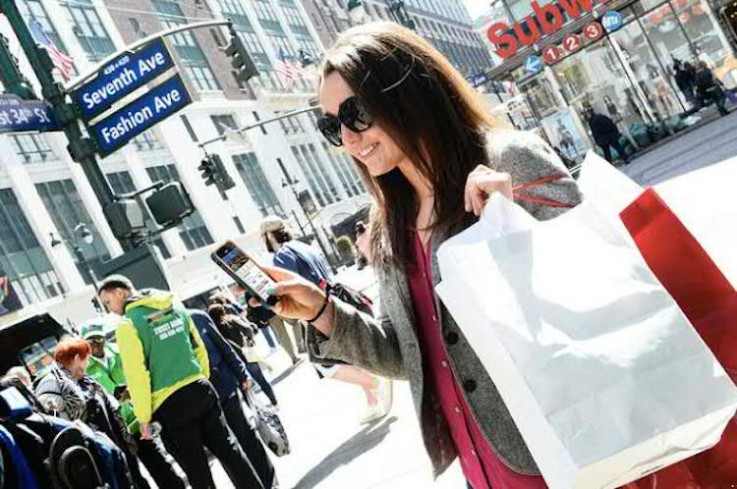
Successful fulfilment
Even with great tech, the experience can still feel far away to me…
The technology works, but the execution is often lacking – or connecting everything up in the right way. A lot of retailers have inherited legacy systems – there’s still a lot of ‘old stuff’ that’s trying to plug into new stuff.
At IBM we recognise that very often the retailer doesn’t want to completely overhaul their technology systems, so we look at ways of helping them deliver value in the moment with the lightest of kitbags. We’ll get them from A to B as a first step, so that when we’re at B, we can make a decision about whether it is C they need to go to or actually, it may be better if we leapfrog straight to F. It’s helping clients out in that short-term moment of pain when they need to get something done, but we also need to make sure that they can demonstrate value and build on that, rather than start from scratch again.
In a similar vein, often when we talk about ‘scale’ we’re using this – incorrectly – as a shorthand for ‘size’. Bigger is often not better. The modern consumer needs scale to be about the retailer’s speed and capability to serve, not the size of their organisation. The modern consumer doesn’t care how big you are, but they do care that you will deliver a great service, quickly, and look after them post-purchase. Which is why a lot of the newer companies are stealing the customer’s heart and wallet – they’re not entangled in the spider’s web of an old ‘this is how we’ve always done things’ infrastructure. Newer, smaller retailers can stop, listen to customers and think about how a service will actually work in real life – and rapidly change it if it doesn’t work. It’s about bringing the experience closer to the customer, in real time – and tech can enable retailers to do this.
What about social media and the changes that’s necessitating?
Labels such as Tom Ford and Burberry are now ‘aligning retail with runway’ because social media is not just accelerating the exposure of emerging trends and fashion products, but it’s actually driving the whole supply chain – from design to production to stock drop. An interesting behaviour is that the sale of skirts, tops and accessories are on the rise while dresses decline, because women don’t want to be seen on social channels like Instagram in the same outfit. This is why we’re seeing the rise of accessories such as pom-poms and bag charms, because you can update an outfit in an instant with one piece, and you can spend anything from Top Shop (who now have a whole category on their website for bag charms and pom-poms) money to Karl Lagerfeld cash and everything in between. But we’re now seeing a supply chain – from the celebrity designer at the top of the pile to the factory worker – which has to keep up with the demands of a consumer who is constantly refreshing their wardrobe.
And it’s important to recognise the impact that this turbo-charged sharing culture has on the supply chain, fulfilment and the overall eCommerce model. As a brand you may spend significant amounts of money on a brilliant social marketing campaign, but that’s no good if you can’t keep up with the supply and your stock sells out before you’ve even got your hashtag campaign out the door. It’s now the job of the retailer to not just be a great shopkeeper – and I would question whether some retailers have remembered that they are shopkeepers above all else – but to also have a sound technology mix, building in anticipatory services based on data insight across every different context that their customer inhabits.
“Businesses need to get simpler to be more efficient, to be quicker, to be more profitable.”
Keeping it simple
Do you think it’s ever going to get simpler?
It has to – consumers are increasingly frustrated and are now no longer looking for the best product first and foremost, but the easiest way to buy it – “How quickly can I get it?”
Simplicity is where retail needs to go in the next year. Context will be meaningless without simplicity: these two concepts have to move together like pistons in an engine. I mentioned earlier that the retail and marketing world are currently focused on ‘moments’ – delivering context and simplicity is the only way that a ‘moment’ will work for the customer.
I think that traditional loyalty offers and discounts will be being replaced by something just simpler, more compelling…
Yes, I totally agree with that. Shoppers today know that all they need to do is sign up for the mailing list to get a discount. You don’t shop in sales; you wait for that 20% to come in your inbox every fortnight. Who buys full price anymore? It’s so easy now to get some kind of deal. Even if you pay full price, you expect to get some freebies with it. Beauty brands such as Space NK and the Liberty Beauty Hall are now doing the mega beauty box where you have a purchase threshold of £100+ to receive a ‘gift’ of a beautifully presented, branded box filled with niche brands. And they are great value too – look at the box that Caroline Hirons created for Cult Beauty – it cost £195, but the box contained nearly £400 worth of products. So this isn’t a sale, but it’s a preferential, experiential piece of commerce (especially when you look at the amount of editorial around these items) where the savvy niche shopper needs to be in the know – you need to sign up to a waitlist, you need to know a little about the brands and the ‘name’ fronting the item. It’s a total event, and I expect to see more of this happening across a number of categories – not just beauty and fashion, but food, homewares and travel.
Omnichannel retail
Thinking about retail online and offline omnichannel, what do you think the most innovative brands will be doing in five years time?
I think there will be no distinction between online, digital and physical. The brand will be in whatever physical space deemed appropriate and convenient for the brand and the customer at that time. Organic online models are now moving into physical shops – supporting the notion of experience-led consumption. For example, MissGuided have a presence in Selfridges and Spotify are in TopShop, too. Dorothy Perkins now have concessions in some Sainsbury stores. So everything will be a lot more ‘mixed up’, but hopefully in a good way. The older shoppers among us will say, “But isn’t that just the ‘bazaar’ model that we had years ago?” Yes – but the experience will be tech-enabled. Retailers will be where the customers are and where they are going to be. Geolocation will play a big part in this to anticipate what service is required where and when – but retailers must have the intelligence capability to form an appropriate strategy to support this emerging service.
As a brand, you must put service ahead of everything: Don’ just make your customer go to you. Be where they are and where they’re going to be.
“Don’t just make your customer go to you. Be where they are and where they’re going to be.”
There’s also been a lot of discussion around Augmented Reality and its potential for the retail experience. The mistake we’ve been making is to talk about what it can replace, and not how it can act as a communications platform. We should not be looking at recreating the store but recreating what the store can do for you and bringing the product to life in your hands. AR can potentially benefit some of those shopping behaviours such as rehearsed ownership – which is what luxury retailers, such as watch and jewellery brands have always done.
“Within the next five years, what perhaps will happen is that we’ll see not just the lines between physical and digital retail blurring, but the lines between retail and the rest of life blurring as well.”
But it’s more than that. The lines between retail and lifestyle are already fuzzy as shopping becomes more embedded into daily life. Physical stores are not going anywhere – consumers will always seek the hedonistic nature of going into shops, and shopping will always be one of the ultimate social experiences, where we learn from and interact with other people. But there will be many more different flavours of retail – we’ll go from today’s vanilla and strawberry to a rainbow of tutti-frutti layers with a cherry on top (and extra nuts).
Internet of things and retail
What do you think about the connected home? Is there anything that especially interests you? Everyone talks about the connected fridge but, for me, there has to be something more exciting in it than that.
The logistical components – sensors, hardware, apps – are clearly making a lot of progress. But we’re still not thinking about how people actually live. Brands need to be careful with machines presented as fake humans as this can often be disingenuous or even ‘creepy’ if not done in the right way. Instead, we need to keep asking “How are we helping people?” I’ve seen lots of ‘clever’ gadgets. But – as anyone who’s been stuck in a corner with at a party with the cleverest person in the room – you don’t want to spend time with them and you certainly don’t want them in your house.
“At the moment, we’re looking at the products that are being connected together. We are not looking at the connections in the person’s life that would make those connected products really do something interesting and useful.”
A more interesting approach is integrating the technology across a person’s life. The current technology-led approach has focused on connecting the products, not the people. This approach has also failed to acknowledge that I’m a different person depending on what time of the day it is, who I’m with, how I am at home compared to the office compared to when I’m with my best mates tonight. Where is the stuff that recognises all these different shades of me in the different things I want to do? How do you – as a brand or service – then make sense of all those connections. We are not looking at the connections in the person’s life that would make those connected products really do something interesting, meaningful and useful.
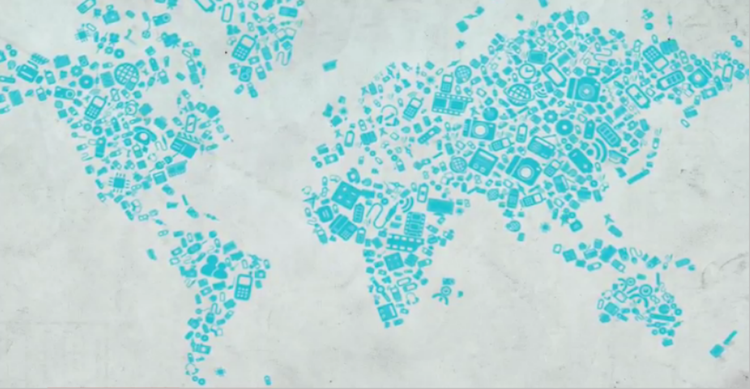
That sounds great if brands get it right, but if they get it wrong…
That’s it, you’ve lost the trust. That’s where you actually stop talking about technology and where you need smart people who understand the shades of grey here, and ensure we don’t overstep the mark. The other thing is being transparent with your customers. That’s the bargain we make with our customers, whichever brand we represent. What they expect from you is a) to be clear about what information you’re taking from me, b) what you’re doing with it and c) give me something useful back in return. A meaningful value exchange.
I think that’s going to be more important as brands start to work together to deliver products and services – which is something that will happen more often to offer value to customers. Being a linear brand on your own isn’t going to cut it anymore. You won’t be able to give people the sort of benefits and values that modern customers expect.
A lot of brands have invested so much time and money and effort into finding out about customers, they’re now drowning in a sea of data and they don’t really know what to do with it. They’ve created so much noise around the customer that they no longer hear what the customer is actually saying. If you don’t understand how to plug that value – that you’ve gained from the data – back into your business, then you will no longer remain relevant as a brand or business. It’s as simple and brutal as that.
What do you think about the role of staff going forward? Will their role change as the technology gets more streamlined?
Mobile can significantly enhance the in-store experience as long as the staff training is there and it is used in the right way. Mobile can give staff the information to serve consumers on a completely different level, but there is an important skills and training element here so that staff can manage customer interaction and technology too. Technology and training go hand in hand, and technology does not replicate service.
What three companies do you think are the most forward thinking and exciting at the moment?
Ocado is always interesting. They are one of the leading research experts in soft robotics – the Ocado technology blog is fascinating. But it’s also about what they do for the normal shopper. Look at what you can buy from Ocado now – it’s not just a supermarket. The health and beauty offer is amazing, they’ve got the Sizzle store for the house, Fetch for pets and are expanding into other categories. They’ve recently talked about opening a ‘showroom’ in London, which will apparently be for general merchandise. Ocado recognise that sometimes you want to get your shopping done your shopping done in 30 seconds, and sometimes you want to take your time and browse the bananas. I really like that way of thinking because it starts with the human being and builds the service around them.
I also love Liberty. Not the first store you think of when you think of retail and tech – but that’s part of why I love them. They – and Ed Burstell the CEO, who is a retail hero of mine – don’t just understand their brand. They inhabit it and look after it. Liberty recognise that the unique physical space of the store is actually one of the major strategic selling points. It’s not just a flagship store – it’s a beautiful destination and experience in itself. They’ve retained its original bazaar feel, but still have a very modern forward thinking view on how their customer wants to shop – for fashion and beauty especially. They could very easily have destroyed that brand by opening meaningless pop-ups or another physical store in London or with a bad online experience.
What’s interesting is that – digitally – they’re not there yet, but they are doing it in a way that it is right for their brand and so they are taking their time. They’re doing it in a way that is right for their customers, a very discerning customer, and they have to deal with everyone from the razor-sharp niche brand fashion fan, to formidable traditional maiden aunts (like me!) to tourists who have flown to London from other continents specifically to shop at that store. For me Liberty is one to watch both digitally and in the store – they are like no other retailer.
Another retailer I always watch with great interest – and I’m a regular shopper there too – is the online beauty store Feelunique. They were one of the first online beauty brands to treat the beauty shopper as an intelligent explorer and not as ‘second best’ in retail. They now also have Chanel as one of their brands, which is a huge coup because Chanel is notoriously picky about its retail partners especially online. That’s really interesting, but speaks volumes about how Feelunique is combining online selling space with high-quality content and social activation.
It was also one of the first online retailers in this space to provide useful shopping tools for customers. The subscription model is great for those products you use regularly to make sure that you never run out of your favourite shampoo.
They also have a really interesting approach to editorial. They’ve got great people from the fashion world – from Harper’s and Harrods for instance – running the editorial operation. There are more and more examples in retail where people have come from the media world who are now helping to create experiences. I think that’s something we’ll see a lot more.
All of these savvy brands have recognised that consumers are now also participants in the buying process, moving very quickly from being shoppers to advocates – so you have to be able to offer something unique and excellent in return, over and above great product and efficient fulfilment.
Recognising your customer and serving them in the right way wherever they are sounds simple – but we’re all still striving for that!
All images courtesy of IBM


